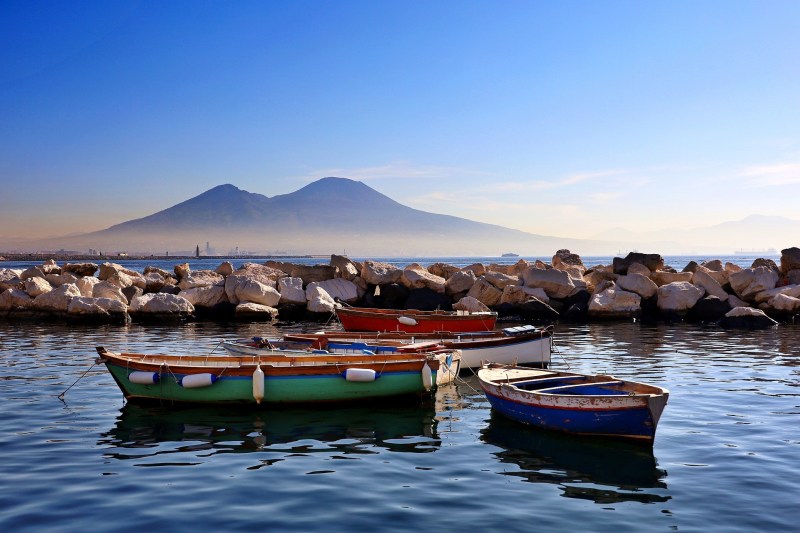
In 79 A.D., Mount Vesuvius erupted, marking one of the most destructive events in history. The stratovolcano — situated about 5.6 miles east of Naples, Italy — shot a cloud of molten rock, pumice, and ash 21 miles into the sky, pulverizing the Roman towns of Pompeii, Herculaneum, Oplontis, and Stabiae. For centuries, the cities remained undiscovered until architect Domenico Fontana, while building an underground channel, found Pompeii’s remnants in 1599.
Excavations followed in the 18th century and beyond, with stunning artifacts showing the human toll of the violent eruption. Jewelry, artwork, and food provided a window into Italy’s ancient culture and what people endured that day.
Herculaneum was discovered in 1707, but it proved difficult to excavate because it was covered in hardened pyroclastic material. Even today, only a fragment of the city has been revealed, and the focus has now shifted to preserving what’s been unearthed.
Now, with the Herculaneum Archaeological Park opening a beach that has been closed since the eruption, you’ll be able to live as the Romans did and gain a better understanding of life as it was. Here are the details.
Herculaneum, Italy: Immerse yourself in a time gone by

Museums let you gaze at artifacts, often cordoned off and held in temperature-controlled rooms. These objects let you view bits and pieces of history, offering snapshots into long-lost times and cultures. Usually, you don’t get to experience history as it was, where you’re immersed in every aspect — from the buildings to the streets and the culture — and live as people did centuries ago. But Herculaneum lets you do that with well-preserved ruins that take you back in time. Now, with the opening of an ancient beach, you can experience a lost world firsthand.
Herculaneum gets its name from the Greek god Hercules. It was reportedly founded by the Oscans in the 7th century B.C. and later ruled by the Romans in 90 B.C. Due to its coastal location and appealing climate, the city was a getaway for well-off families.
Until its discovery, Herculaneum lay covered in 16 meters of ash and volcanic rock, helping preserve wooden structures, food, and fabric. Today, at the Herculaneum Archaeological Park, visitors can walk through houses and courtyards and view artwork and relics. As opposed to a museum, the park offers a captivating experience of life as it was.
Recently, the park announced the opening of a Roman beach that had closed since that fateful day centuries ago. The result of a multi-year restoration project, the beach lets visitors stroll and live as the Romans did and gain a greater understanding of a city lost to time.
The project required research, restoration, archaeological excavations, and architectural and engineering solutions. The aim was to return the beach to its original condition before the eruption.
Herculaneum Archaeological Park Director Francesco Sirano described the project, saying, “The ancient beach is an extraordinary and unique place in the world. In order to preserve it for the future, we have reduced the risk of continuous flooding and the dangers to the stability of the excavation fronts and the sea front of the ancient city by revising it today as the ancient Romans did. We restore the 79 A.D. landscape and let everyone walk the beach again.”
How to get to Herculaneum, Italy

You can visit Mount Vesuvius and the surrounding ruins by taking a flight to Naples International Airport and then driving (or taking a bus or train) to the site of your choice. You can explore the towns and also the volcano, with hiking trails taking you right to the crater’s rim. But be careful — Mount Vesuvius is active to this day.
The eruption of Mount Vesuvius destroyed towns and landscapes, covering the surroundings in meters of ash and volcanic rock. In time, archaeological discoveries offered a window into long-ago cultures, offering a fascinating glimpse into Italy’s past. The opening of Herculaneum’s restored beach lets visitors experience Roman life firsthand, immersing them in an ancient culture. If you want to not only learn history but live it, this destination is a worthy pick.



